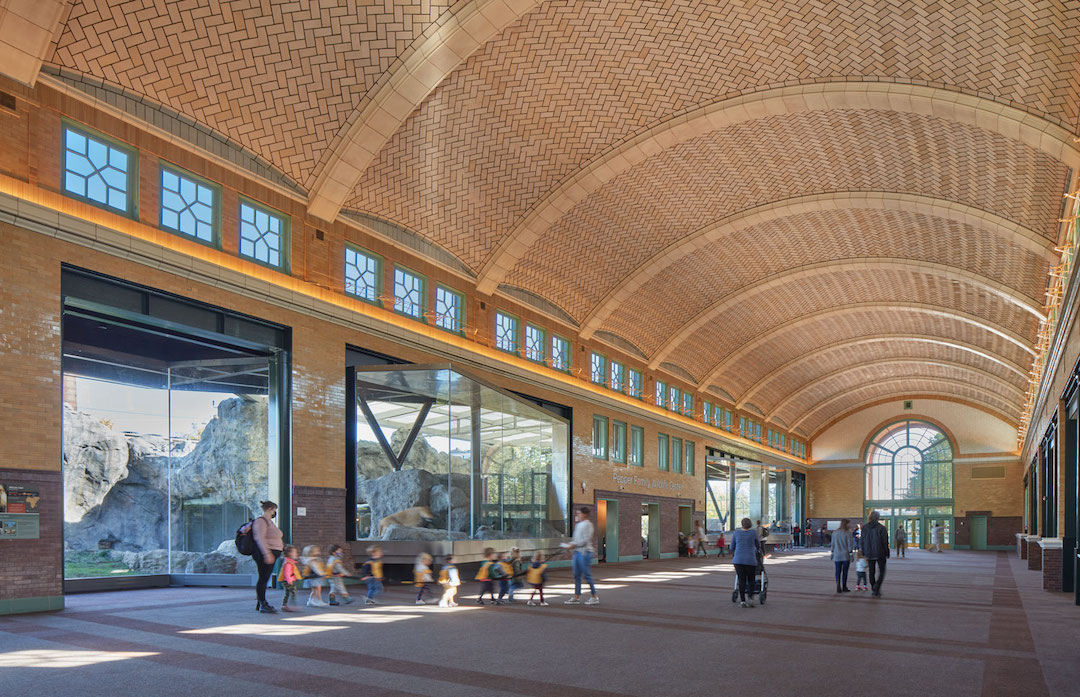Goettsch Partners has recently announced the completion of the $41 million renovation, restoration, and expansion of the Pepper Family Wildlife Center at Lincoln Park Zoo. The facility is home to a pride of African Lions, Canada Lynx, red pandas, and snow leopards.
The 54,000-sf facility nearly doubles the size of the previous lion habitat and provides increased transparency with a more immersive experience for visitors while restoring the architectural integrity of the original landmarked building. The habitat focuses on providing choices for the animals and enhanced wellbeing, from thermal comfort zones for heating and cooling to intricate rock work and trees for climbing.
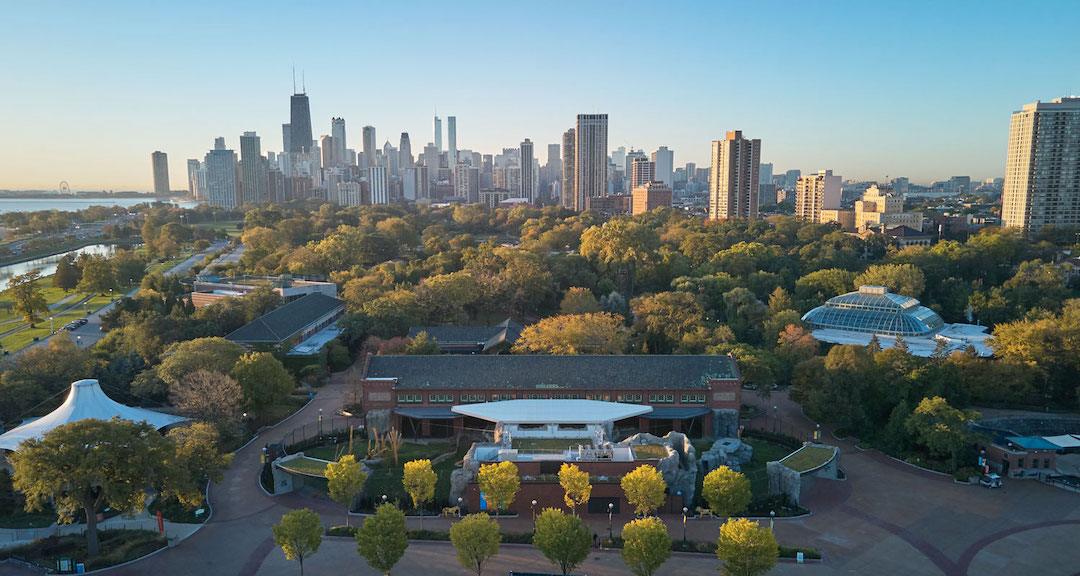
The original building, located at the heart of Lincoln Park Zoo, was originally completed in 1912 and designated a Chicago Landmark in 2005. The new lion habitat spans the full northern side of the building with the design informed by data collected by the zoo over the last several years on lion behavior and space use to understand their preferences.
Large 1 1/2”-thick glass panels provide expansive views of the outdoor lion space. The savanna-style habitat includes detailed rock work to introduce climbing features and expand environmental options for the lions while providing embedded heating and cooling elements for climate control. Tree structures and deadfall are made from trees certified by the Forest Stewardship Council. Food zip lines, simulating prey, provide an enrichment opportunity for the lions.
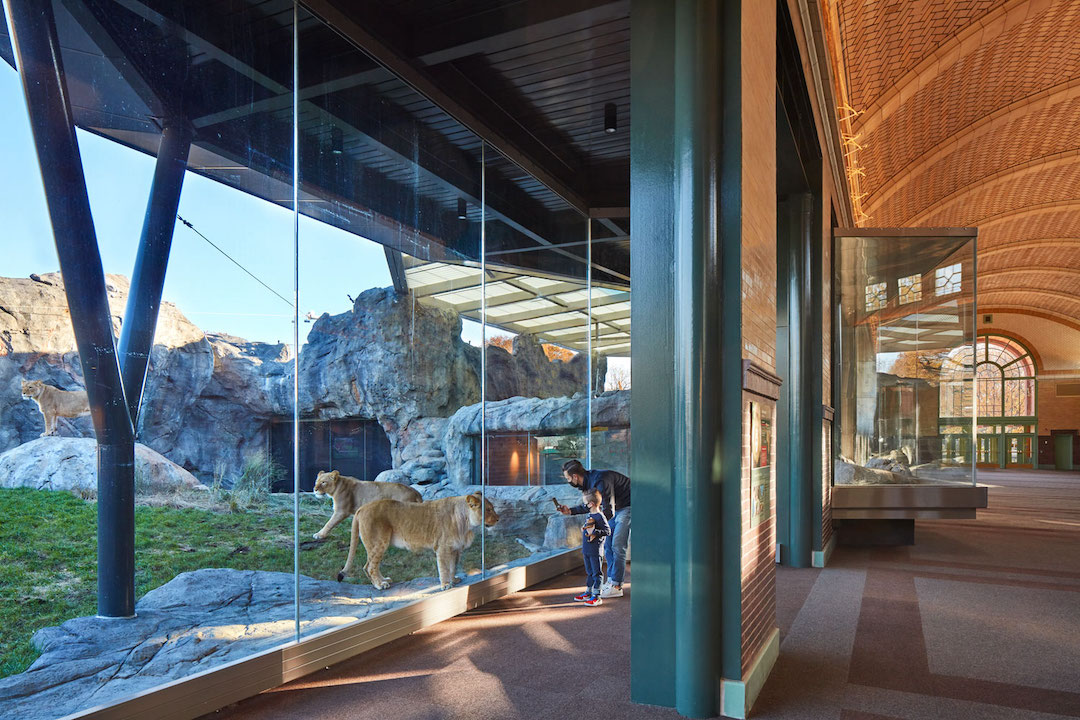
The building’s design facilitates viewing from the Lion Loop, a sunken elliptical path leading visitors down from the TAWANI Great Hall into the center of the habitat. The loop provides visitors the opportunity to view lions from all around, even through the skylights overhead. Additionally, a demonstration training wall allows visitors to view the lions working with zoo staff to participate in their care.
Goettsch Partners designed the project in collaboration with Seattle-based zoo exhibit specialists PJA.
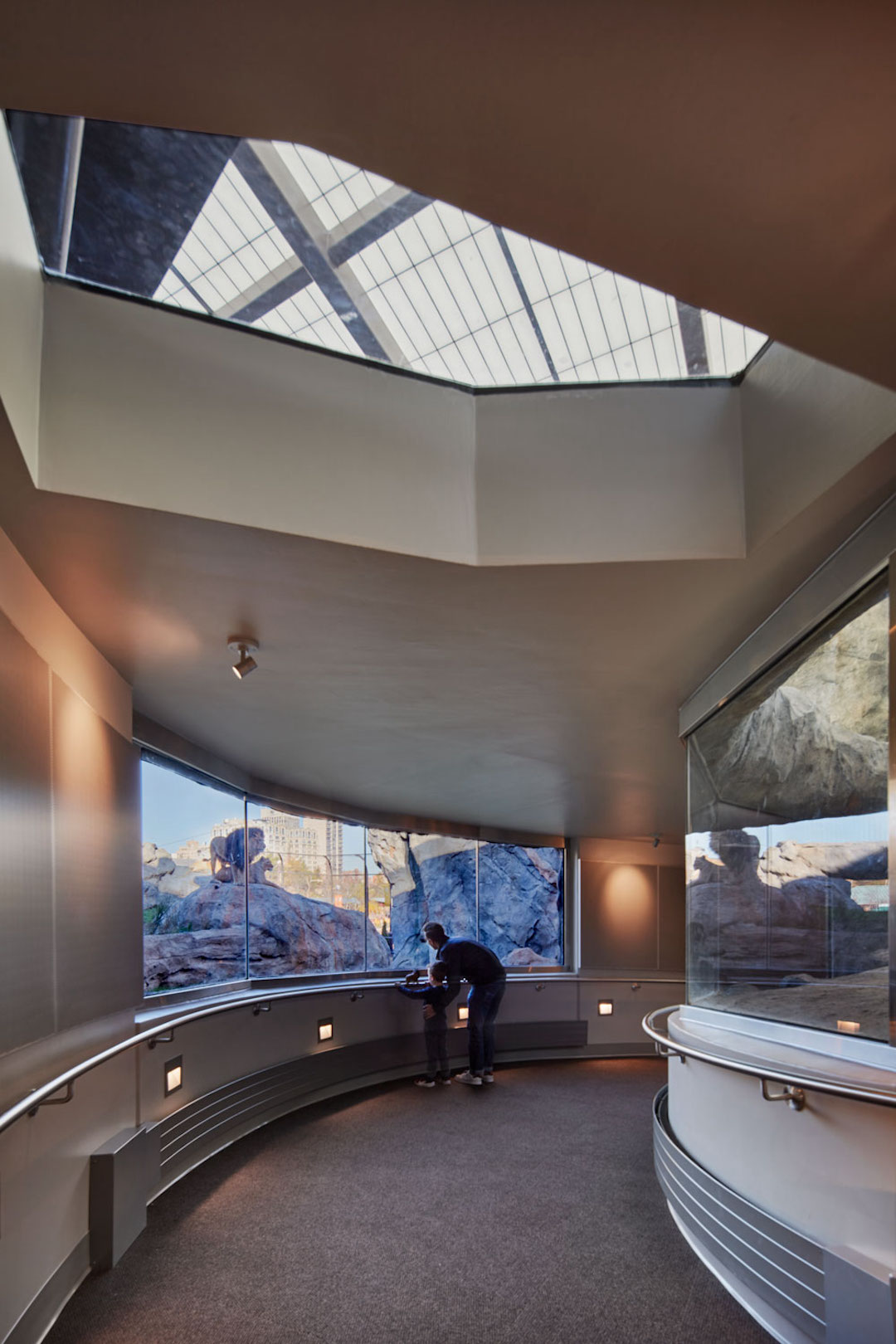
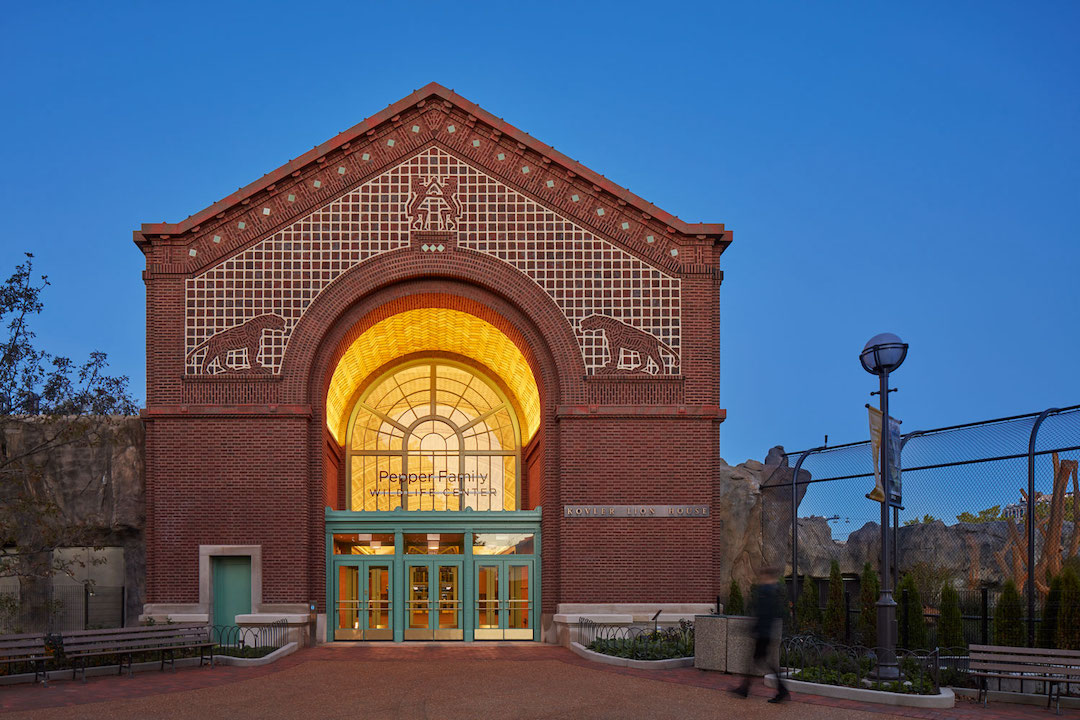
Related Stories
| Aug 11, 2010
Curtain rises on Broadway's first green theater
The Durst Organization and Bank of America have opened New York's first LEED-certified theater, the 1,055-seat Henry Miller's Theatre. Located inside the new 55-story Bank of America Tower at One Bryant Park, the 50,000-sf theater is located behind the preserved and restored neo-Georgian façade of the original 1918 theater.
| Aug 11, 2010
Restoration gives new life to New Formalism icon
The $30 million upgrade, restoration, and expansion of the Mark Taper Forum in Los Angeles was completed by the team of Rios Clementi Hale Studios (architect), Harley Ellis Devereaux (executive architect/MEP), KPFF (structural engineer), and Taisei Construction (GC). Work on the Welton Becket-designed 1967 complex included an overhaul of the auditorium, lighting, and acoustics.
| Aug 11, 2010
Concrete Solutions
About five or six years ago, officials at the University of California at Berkeley came to the conclusion that they needed to build a proper home for the university's collection of 900,000 rare Chinese, Japanese, and Korean books and materials. East Asian studies is an important curriculum at Berkeley, with more than 70 scholars teaching some 200 courses devoted to the topic, and Berkeley's pro...
| Aug 11, 2010
Piano's 'Flying Carpet'
Italian architect Renzo Piano refers to his $294 million, 264,000-sf Modern Wing of the Art Institute of Chicago as a “temple of light.” That's all well and good, but how did Piano and the engineers from London-based Arup create an almost entirely naturally lit interior while still protecting the priceless works of art in the Institute's third-floor galleries from dangerous ultravio...
Cultural Facilities | Aug 11, 2010
12 major trends in library design
Many academic planners assumed that the coming of the Internet would lead to the decline of the library as we know it. To the contrary, many academic libraries have experienced significantly increased patron use in recent years.
| Aug 11, 2010
Bronze Award: John G. Shedd Aquarium, Chicago, Ill.
To complete the $55 million renovation of the historic John G. Shedd Aquarium in the allotted 17-month schedule, the Building Team had to move fast to renovate and update exhibit and back-of-house maintenance spaces, expand the visitor group holding area, upgrade the mechanical systems, and construct a single-story steel structure on top of the existing oceanarium to accommodate staff office sp...
| Aug 11, 2010
Great Solutions: Green Building
27. Next-Generation Green Roofs Sprout up in New York New York is not particularly known for its green roofs, but two recent projects may put the Big Apple on the map. In spring 2010, the Lincoln Center for the Performing Arts will debut one of the nation's first fully walkable green roofs. Located across from the Juilliard School in Lincoln Center's North Plaza, Illumination Lawn will consist ...
| Aug 11, 2010
Idea Center at Playhouse Square: A better idea
Through a unique partnership between a public media organization and a performing arts/education entity, a historic building in the heart of downtown Cleveland has been renovated as a model of sustainability and architectural innovation. Playhouse Square, which had been working for more than 30 years to revitalize the city's arts district, teamed up with ideastream, a newly formed media group t...
| Aug 11, 2010
Divine intervention
Designed by H. H. Richardson in the 1870s to serve the city's burgeoning Back Bay neighborhood, Trinity Church in the City of Boston would come to represent the essence of the Richardsonian Romanesque style, with its clay tile roof, abundant use of polychromy, rough-faced stone, heavy arches, and massive size.
| Aug 11, 2010
Dream Fields, Lone Star Style
How important are athletic programs to U.S. school districts? Here's one leading indicator: In 2005, the National Football League sold 17 million tickets. That same year, America's high schools sold an estimated 225 million tickets to football games, according to the American Football Coaches Association.


